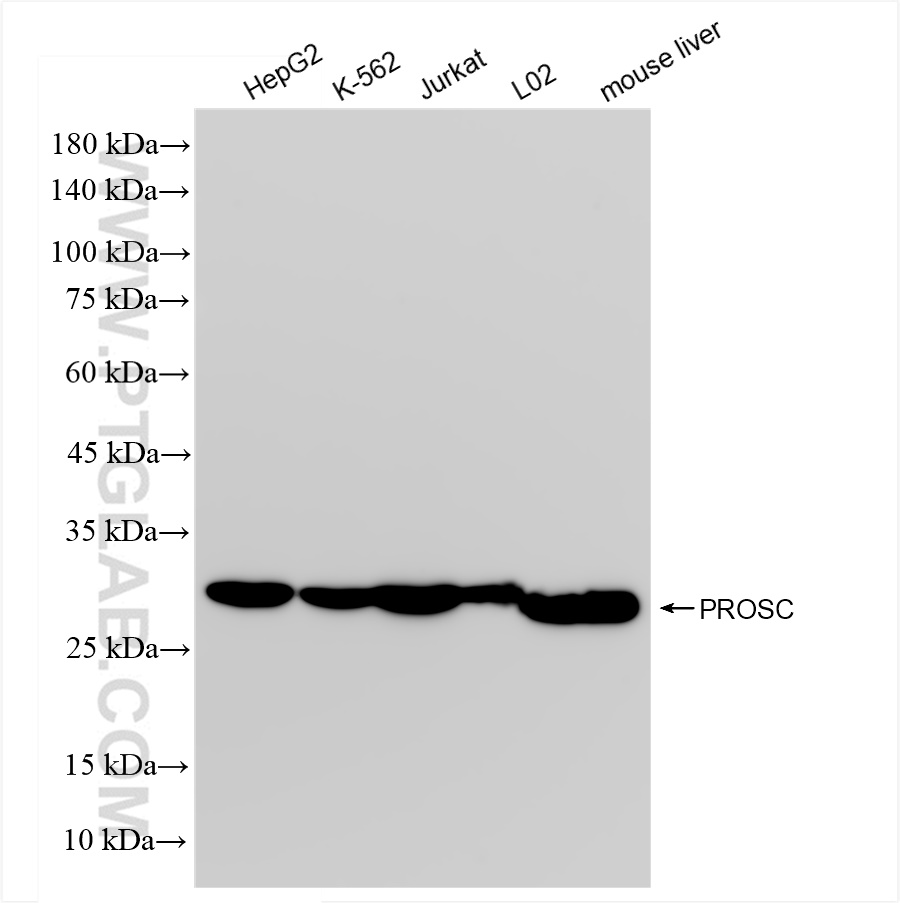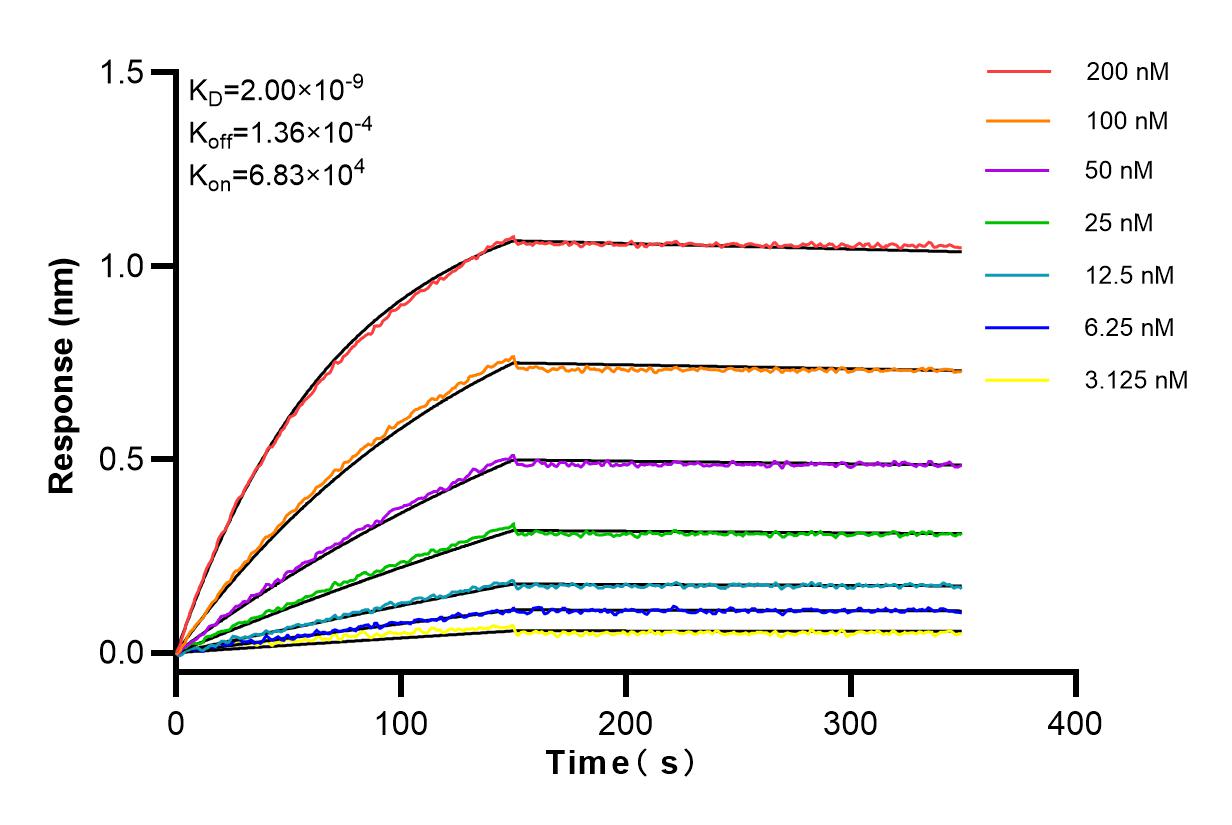PROSC Recombinant antibody
PROSC Uni-rAbTM Recombinant Antibody for WB, ELISA
Host / Isotype
Rabbit / IgG
Reactivity
human, mouse
Applications
WB, ELISA
Conjugate
Unconjugated
CloneNo.
240998B6
Cat no : 83831-5-RR
Synonyms
Validation Data Gallery
Tested Applications
| Positive WB detected in | HepG2 cells, K-562 cells, Jurkat cells, L02 cells, mouse liver tissue |
Recommended dilution
| Application | Dilution |
|---|---|
| Western Blot (WB) | WB : 1:5000-1:50000 |
| It is recommended that this reagent should be titrated in each testing system to obtain optimal results. | |
| Sample-dependent, Check data in validation data gallery. | |
Product Information
The immunogen of 83831-5-RR is PROSC Fusion Protein expressed in E. coli.
| Tested Reactivity | human, mouse |
| Host / Isotype | Rabbit / IgG |
| Class | Recombinant |
| Type | Antibody |
| Immunogen | PROSC fusion protein Ag18369 |
| Full Name | proline synthetase co-transcribed homolog (bacterial) |
| Calculated Molecular Weight | 275 aa, 30 kDa |
| Observed Molecular Weight | 30 kDa |
| GenBank Accession Number | BC012334 |
| Gene Symbol | PROSC |
| Gene ID (NCBI) | 11212 |
| Conjugate | Unconjugated |
| Form | Liquid |
| Purification Method | Protein A purfication |
| Storage Buffer | PBS with 0.02% sodium azide and 50% glycerol pH 7.3. |
| Storage Conditions | Store at -20°C. Stable for one year after shipment. Aliquoting is unnecessary for -20oC storage. 20ul sizes contain 0.1% BSA. |
Background Information
Human Pyridoxal 5′-phosphate-binding protein (PLPBP; previously proline synthase cotranscribed homolog, PROSC) was first described in 1999 and was demonstrated to be ubiquitously expressed in many tissues. PROSC is ubiquitously expressed in human tissues and is highly conserved throughout evolution. PROSC deficiency could therefore markedly increase free cellular PLP levels (PMID: 31825581, 27912044).
Protocols
| Product Specific Protocols | |
|---|---|
| WB protocol for PROSC antibody 83831-5-RR | Download protocol |
| Standard Protocols | |
|---|---|
| Click here to view our Standard Protocols |




